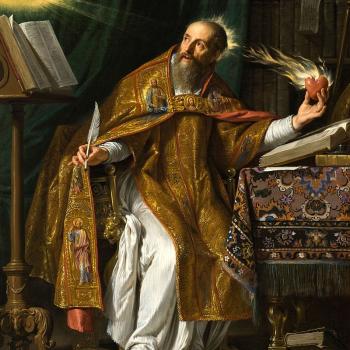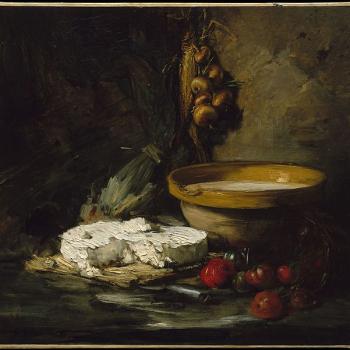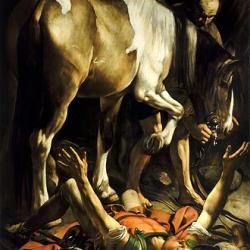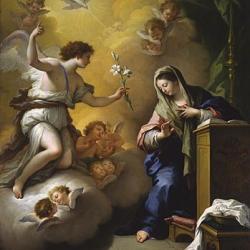When I sent out questions for my fellow Patheos Catholic Writers to answer most of them answered with short precise answers. But Fr. Stephanos Pedrano from Prince of Peace Abbey went above and beyond the call of duty and gave a portrait of his life as a Benedictine monk. His two answers he gave to my first two questions were a tad bit too long to include in my composite post. Such are the tough choices made as an editor. But his material was so rich in content that I couldn’t let it go to waste. So here is that extra material that will help you contemplate what its like to write living as a Benedictine Monk in the 21st century
As a monk, the hours of each day of my life weave themselves between the times of the several communal daily services of the Liturgy of the Hours and the Mass and the times for solitary prayer. The communal services are made up largely of giving voice, ear and heart to Scripture, Patristic readings and liturgical prayers. The Patristic and liturgical texts are themselves deeply connected to Scripture. Then, for a Benedictine monk, the times for solitary prayer, between two and four hours daily, also focus on Scripture, even exclusively, but with the aim being depth of receptivity, rather than specified quantities of text; this ancient discipline bears the name “lectio divina,” divine reading.

Each monk can discover for himself which text he wishes to use and how much of it. He may find that one word or one line in a text arrests his attention, and he might spend that entire session on that one, or an entire season. Lectio divina has been a major influence on my homilies. Having said all this so far, I will continue this response by repeating something I wrote as a comment elsewhere in this group.
I had never thought of myself as a writer until I realized I was writing homilies all the time. So, my column is homilies. What may be distinctive about that is my underlying stance towards celebrating the Liturgy.
Each Mass begins with a Penitential Act, a renewal of conversion, and it culminates in eating and drinking the Eucharistic Covenant, a life-and-death commitment.
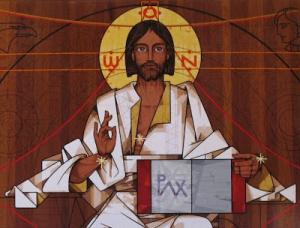
Similarly, the whole Liturgical Year of celebrating the Mass, the whole Liturgy, has Christ’s Passover (“Paschal”) Triduum as its source and summit, for which we prepare by Lenten penitential reconversion and at which we recommit ourselves in the Eucharistic Covenant by renewing our Baptismal Vows.
Beyond my lifelong ongoing conversion as one of the disciples of Christ, I also have my Benedictine monk’s vow that bears precisely that name, “ongoing conversion of ways.”
[St. Benedict uses the Latin frequentative “conversatio,” ongoing conversion, rather than merely the Latin “conversio.” “Conversatio morum”: ongoing conversion of ways.]My stance behind the body of my homilies is to draw out from the Gospel Christ’s consistent call for our personal conversions, for opening ourselves in vulnerability to become intimates of God. Without our doing that, we are just making noise AT people about “the issues.” And any hypocrite can do that (I make such noise on Facebook, not in my homilies). Long before, far beneath and everlastingly after all other issues is our having issued from the intimacy of very God.
Therefore, the name of my column: “Turn. Love. Repeat.”
For further reflection on this topic please read Lectio Divina Reflections with Kristin
If You Do Not Forgive: Lectio Divina Reflection JUNE 10, 2020




